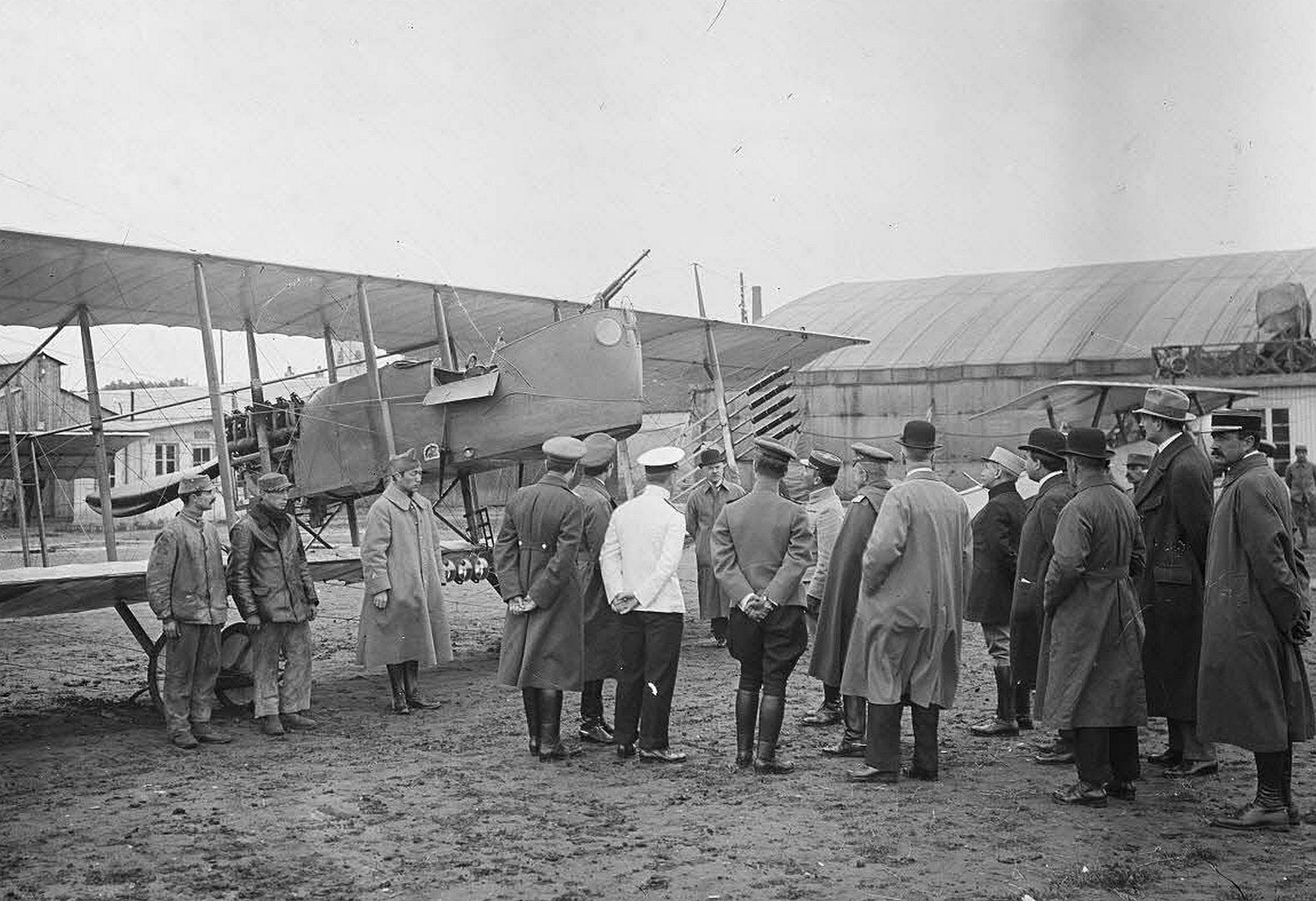Forums
- Forums
- Duggy's Reference Hangar
- Misc Library
- Le Prieur rocket
Le Prieur rocket
Post a reply
- Go to Next topic
- Go to Welcome
- Go to Introduce Yourself
- Go to General Discussion
- Go to Screenshots, Images and Videos
- Go to Off topic
- Go to Works in Progress
- Go to Skinning Tips / Tutorials
- Go to Skin Requests
- Go to IJAAF Library
- Go to Luftwaffe Library
- Go to RAF Library
- Go to USAAF / USN Library
- Go to Misc Library
- Go to The Ops Room
- Go to Made in Germany
- Go to Campaigns and Missions
- Go to Works in Progress
- Go to Juri's Air-Raid Shelter
- Go to Campaigns and Missions
- Go to Works in Progress
- Go to Skinpacks
- Go to External Projects Discussion
- Go to Books & Resources
-
6 years agoSun Jan 21 2024, 05:37pmDuggy
 Main AdminLe Prieur rockets (French Fus?es Le Prieur) were a type of incendiary air-to-air rockets used in World War I against observation balloons and airships. They were invented by the French Lieutenant Yves Le Prieur and were first used in the Battle of Verdun in 1916. Due to great inaccuracy their range was limited to about 115 metres (126 yards).
Main AdminLe Prieur rockets (French Fus?es Le Prieur) were a type of incendiary air-to-air rockets used in World War I against observation balloons and airships. They were invented by the French Lieutenant Yves Le Prieur and were first used in the Battle of Verdun in 1916. Due to great inaccuracy their range was limited to about 115 metres (126 yards).
Development
The Le Prieur rocket was essentially a cardboard tube filled with 200 grams of black powder with a wooden conical head attached (by doped paper or linen tape) and had a triangular knife blade inserted in a slot across its apex forming a spear point. A square sectioned wooden stick (usually pine) was taped to the fish with about 3.0 metres (9.8 feet) extending back from the base of the rocket and fitted snugly into a launch tube attached to the aircraft inter-plane struts.
As top French military officers had expressed concerns about fire hazard for the attacking aircraft, Yves Le Prieur first experimented with his weapon by fitting one on a short section of a Voisin aircraft wing bolted on a Piccard Pictet (Pic-Pic) automobile (one of the few period cars with a genuine 120 km/h capability). As the tests went on with full success, the weapon was soon put into active service.
Method of use
The rockets were fired electrically from the interplane struts supporting the wings of biplanes via a cockpit switch. The switch launched all the rockets consecutively. The rockets were generally fired at a range of 100?150 metres with the aircraft at an inclined dive angle of 45 degrees.The steeper the dive the straighter the trajectory and the more accurate the attack. Attacks were made in the direction of the length of the balloon and against the wind, the pilot taking aim via the plane's existing gun-sight. However, the ignition and discharge of each rocket did not occur immediately and a delay varied slightly from one rocket to another. Thus the pilot had to continue to hold the target in his gun-sight and the dive continued until the last rocket discharged.
It successfully brought down observation balloons, but never managed to bring down a Zeppelin, although it was used to defend the United Kingdom from Zeppelin raids.
After planes became equipped with tracer rounds and incendiary bullets which were highly effective against hydrogen filled aerostats, the rockets were gradually abandoned through 1918. Aircraft that were armed with the rockets included the Nieuport 11/16/17, SPAD 7/13, Sopwith Baby/Pup/Camel, Farman HF.20/21, and the B.E.2/B.E.12. They were usually armed with eight rockets but the SPAD 7 carried six and the B.E.12 had ten.










-
14 hours ago
 Main Admin
Main Admin
Post a reply
- Go to Next topic
- Go to Welcome
- Go to Introduce Yourself
- Go to General Discussion
- Go to Screenshots, Images and Videos
- Go to Off topic
- Go to Works in Progress
- Go to Skinning Tips / Tutorials
- Go to Skin Requests
- Go to IJAAF Library
- Go to Luftwaffe Library
- Go to RAF Library
- Go to USAAF / USN Library
- Go to Misc Library
- Go to The Ops Room
- Go to Made in Germany
- Go to Campaigns and Missions
- Go to Works in Progress
- Go to Juri's Air-Raid Shelter
- Go to Campaigns and Missions
- Go to Works in Progress
- Go to Skinpacks
- Go to External Projects Discussion
- Go to Books & Resources






